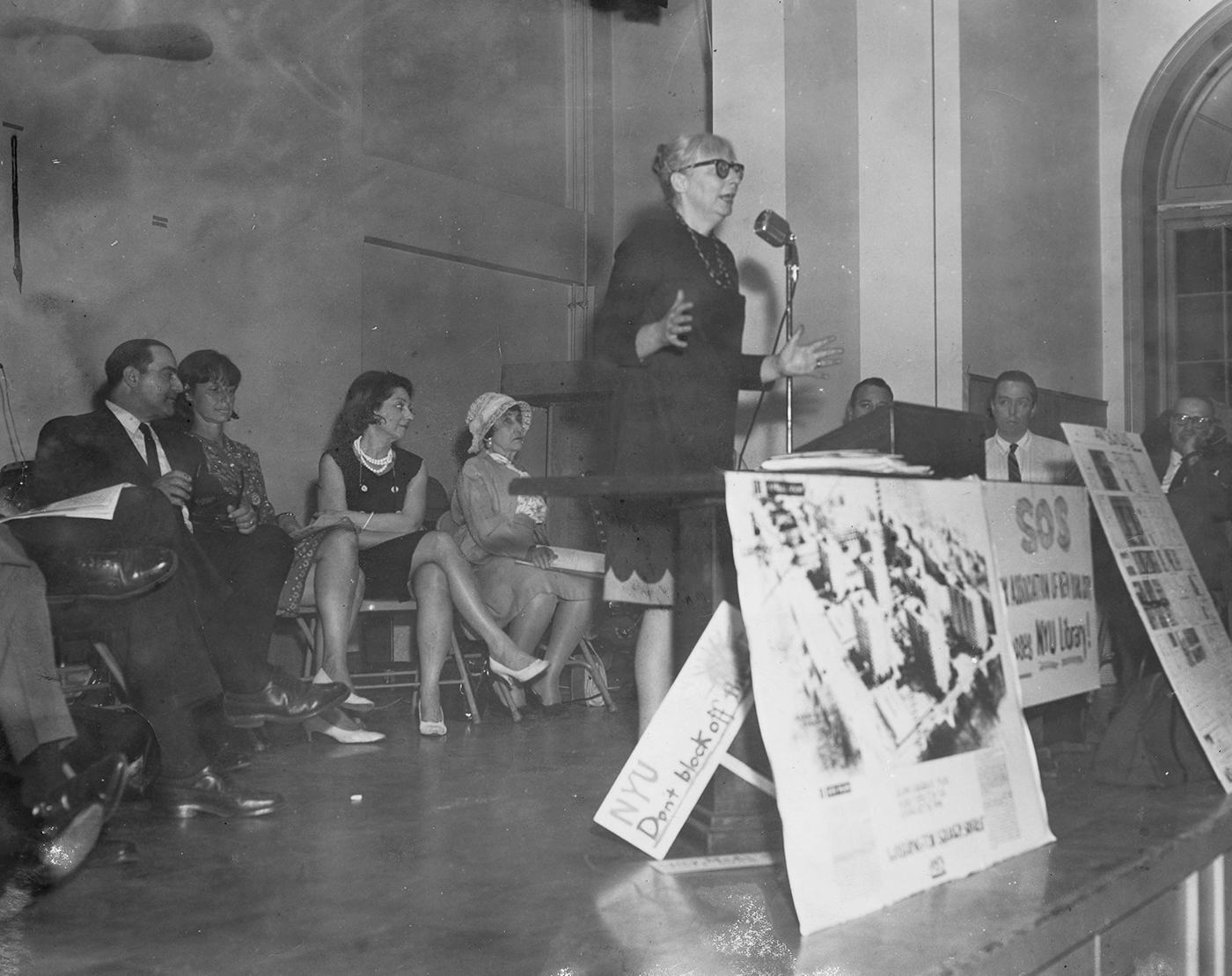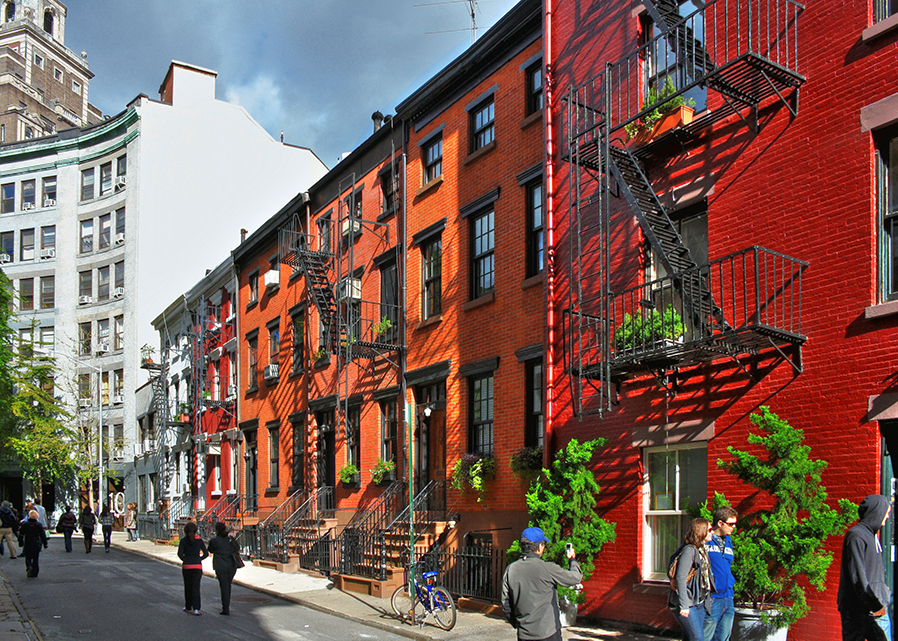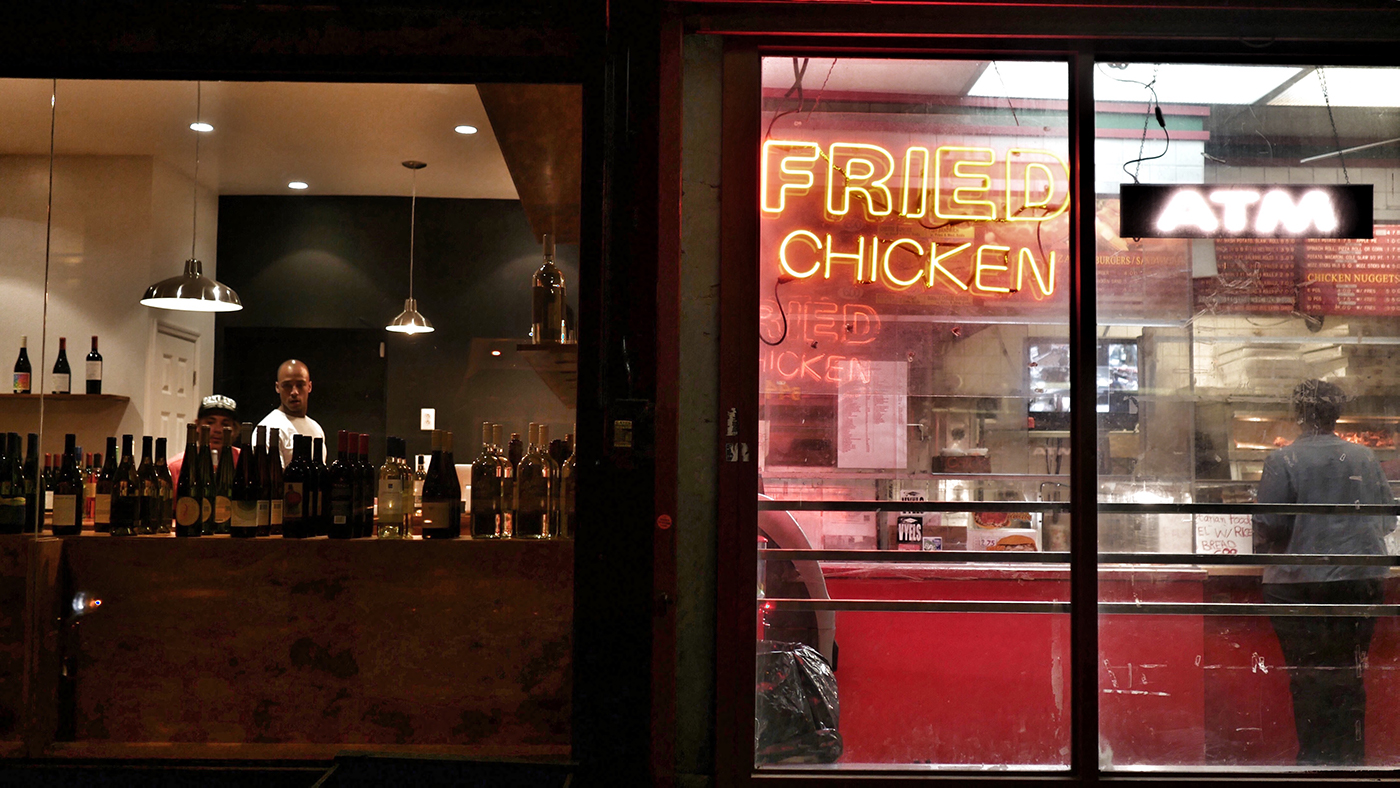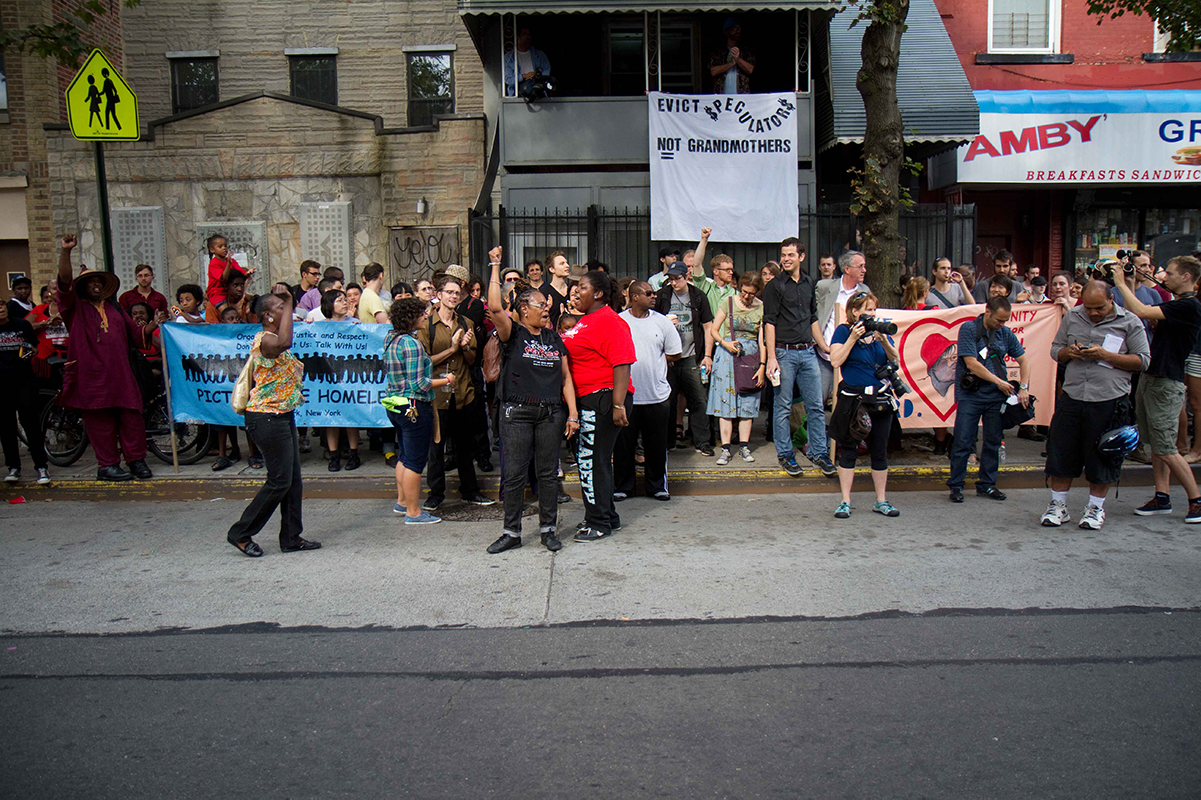
We are celebrating 15 years — and counting — of stories that are deeply researched and deeply felt, that build a historical record of what the city has been.
We are celebrating 15 years — and counting — of stories that are deeply researched and deeply felt, that build a historical record of what the city has been.
For so many urbanists, for so many years, Jane Jacobs’ Death and Life of Great American Cities has been an eye-opening guide to seeing the city and its workings: an affirmation of its joys and a celebration of its capacity for self-regulation. Not for nothing is the book — published sixty years ago, in 1961 — a classic of both urban studies and American literature, or is postwar US urban history so often reduced to the story of a beatific Jane Jacobs versus an evil Robert Moses in a battle between top-down, homogeneous banality and participatory, incremental diversity. But as historian Samuel Zipp writes, “if she remains ‘Saint Jane’ to many she is less revered by others, appearing now as a thinker mired in the past at best, and an object of mild suspicion at worst.” Today, as many more scholars, critics, and activists focus on the city’s structures of violent exclusion, from residential segregation to racist policing, the street-level view appears myopic, and sidewalks, stoops, and small shops look like a recipe for gentrification. The evils of urban renewal are largely historical, while a popular alternative to the neoliberal city has yet to emerge. So, can we still learn from Jacobs today? In the conversation below, Zipp, Nate Storring and Jennifer Hock plumb both her blind spots and prescient thinking. Realignments in urban politics may have changed her reputation, but they also present a new opportunity for imagining the good city.
The Jane Jacobs we know, the patron saint of Hudson Street, is trapped in amber now. Those who revere her still think of her as essentially timeless — an evergreen font of wisdom about urban life, the hero of all the morality tales city lovers tell themselves. But if she remains “Saint Jane” to many she is less revered by others, appearing now as a thinker mired in the past at best, and an object of mild suspicion at worst. Her ideas are a relic of New York’s Greenwich Village in another era, these folks say, a toolkit of small-scale ideas rendered more or less useless in a time of huge-scale urban and global problems.
It’s tempting to agree with the skeptics. Jacobs, it may seem, has become a historical figure. Between the 1960s and the 1980s, in an age of suburbanization, she was the thinker around which so many urban stories revolved, her vision of restoring vitality to cities crucial to turning back the devastation unleashed by several generations of modernizing dreams seemingly come to ruin. Now, however, she has become something else. Not quite the villain of a newer, emergent generation of city stories, her familiar lessons about the virtue of neighborhoods, “eyes on the street,” and mixed uses nevertheless seem quite beside the point to those fixated on the quandaries of precarity, inequality, racialized dispossession, the financialization of housing, and climate catastrophe.
One of the reasons for this impasse is, of course, gentrification. Whatever Jacobs may have had to say about the problem — and she had a number of ideas about it and what to do about it — it has become something of a working assumption amongst Jacobs skeptics that her ideas are the original source of the “aesthetics of gentrification” that bedevil cities today. For many, the basic ideas Jacobs recommended in The Death of Life of Great American Cities have themselves become the building blocks of upscale urbanism. Since the 1980s and 1990s the ideals that became codified in her name — an urbanism of the streets, stoops, and small-scale neighborhood—have lost their power to lead the way out of urban crisis. Adopted as the ideal vision of a middle class “back to the city” movement in the 1970s, they are now simply mobilized as lifestyle amenities for real estate boosterism, instruments of accumulation in the quivers of urban developers.[1]
This is in part because of a larger problem: Jacobs would not let herself see cities as primal scenes of exclusion. She recognized the fact of inequalities — of class, and particularly of race — but was less concerned to confront the way they had a constitutive role in making, not just ruining city life. She tended to see them as forces that could undo the natural virtues of urban density and diversity — not fundamental properties of the ways that American cities had been built and arranged for more than a century before her mid-20th century moment.
For Jacobs, cities were about freedom and creativity. They were dynamic organisms, self-organizing systems of interdependencies — seedbeds for “organized complexity” that were predisposed to create vibrant social worlds if the planners and bulldozers could be turned back and people’s innate interest in creating “new work” could be unleashed. The contemporary crisis of cities that goes by the name of gentrification, the process Jacobs first called the “self-destruction of diversity,” was for her an unfortunate part of the larger churning — the death and life — that city economies unleashed. Vibrant city economies, she argued, drive overall prosperity. They might still be harnessed to transform the stagnant “plantation age” economies of modernity into new, human-centered, democratic worlds.
Jacobs’ innate belief in the generative power of cities, her sheer faith in their innate capacity to produce new ideas and collaborative innovation from their diversity of uses and peoples, may seem outmoded to many today. It might even seem naïve — but that faith gave her the conviction that cities were places where problems gathered not to fester but to be solved. More than a tribune of the ideal neighborhood, Jacobs was perhaps our greatest champion of the city as a decentralized, dynamic, always unpredictable human system. The city, she believed, could never be a modern machine for living erected by the wise and all-knowing. It existed because people themselves created lives from its chaotic, improvisational economies.
Can we recover some of her faith in the problem-solving powers of city life? Or have the self-generating powers of her city economies run out of steam? Were they ever anything more than fables, fantasies about small-scale democracy ready to be captured by the forces of neoliberalism? I suspect that we should not settle for either the myth of Saint Jane or the urge to toss her into the dustbin of history. Either impulse leaves her caught, failed by partial appreciation for the full range of her thinking, held in the hardened suspension of hasty assumptions. – Samuel Zipp
Jacobs’ legacy is divided. On the one hand she should be seen as an analyst of gentrification, not simply a harbinger of its ill effects. But she also treats with kid gloves the social phenomenon that has made gentrification such an urgent topic today: race. Of course, gentrification can and has happened in places where race is of little, or at least reduced significance. Does her reticence on race make Jacobs’ work less useful today? Or can we pry her loose from the primal scene of the “sidewalk ballet” — Greenwich Village in the 1950s and 1960s where the classic “aesthetics of gentrification” was founded — and find in her work any other clues as to what might be done about gentrification?
Jacobs may not provide much insight into the social and cultural forces behind gentrification in American cities today; however, she does offer plenty more use regarding the economic forces. For one thing, Jacobs has always been a strong advocate for new models of affordable housing. While she critiqued the “projects” built under the American urban renewal regime for their anti-urban design, Jacobs led the effort to build the more granular West Village Houses in New York City, 420 affordable apartment units planned by the neighborhood and subsidized by New York City and State. After moving to Toronto in 1969, Jacobs also became a booster of her adopted city’s emerging public housing program, which created affordable housing by buying up and converting older houses, and by building new infill development in empty lots and even in backyards.
On the other hand, Jacobs also prefigured many of the market-oriented arguments about affordability that are popular today. In her final book Dark Age Ahead, for example, she argues that North American cities have fallen behind on new housing construction, leading to rising prices and homelessness rates. And Jacobs had been calling for the liberalization of land-use zoning for over three decades before that. In this same vein, she believed that promoting broad-based ownership and other forms of secure tenure was particularly important to battling gentrification, for businesses as well as homes.
I’m convinced that Jacobs remains relevant as much because of the quality and accessibility of her writing as the value of her ideas and observations. She may be able to help specialists formulate policy, certainly, but she also teaches the average reader how to understand and appreciate aspects of the city they hadn’t been able to articulate before, and street life — even that hackneyed “sidewalk ballet” — remains chief among them.
When it comes to issues of race, racism, and gentrification, we need to bring Jacobs into the 21st century by placing her in dialogue with writers who have thought deeply about the ways in which racism is implicated in the “sidewalk ballet.” For instance, the political theorist Iris Marion Young, who builds on Jacobs’ ideas in her characterization of city life as “an openness to unassimilated otherness,” even as she admits that this view remains an unrealized ideal in contemporary cities characterized by segregation, marginalization, and exclusion.[2] Also relevant here is Elijah Anderson, who characterizes American cities as patchworks of racially exclusive and homogenous neighborhoods but who also sees rare instances of mixing and encounter under “cosmopolitan canopies where people of different racial and cultural types not only share space but seek out each other’s presence.”[3]Too often we either take Jacobs’ descriptions of street life at face value or we dismiss them as nostalgic, where in fact many have continued to study the conditions under which various types of cooperation and conflict emerge in urban public places.
Jacobs is remembered primarily as an advocate for a proper kind of urban space — the streets and stoops of the piecemeal city over the modern city of towers and plazas. Have we too closely associated her with debates over physical urban space and ideal forms of urban public life? How might this have shaped the way that Jacobs has taught people to understand gentrification?
40 or 50 years after the publication of Death and Life, Jacobs’ reputation as a defender of older neighborhoods and her vivid writings on urban public life combine to offer a kind of alibi for the gentrifier — an alibi that that might be consonant with her ideas in some ways and quite far removed from them in others. It’s quite easy today to read her defense of the streets and the stoops, her disdain for redevelopment, and her description of the virtues of older buildings through the eyes of the young, predominantly white professionals who have flooded into city centers since the 1990s, valorizing brownstones and rowhouses, walkability, and street life. To this growing demographic, accustomed to racially and economically homogeneous landscapes, and uncertain of its place in the city, her idealized descriptions of urban public life might seem to describe the benefits of various kinds of diversity. After all, Jacobs’ West Village streets have room for the working class as well as the middle class, for public figures as well as strangers, for reciprocity and interdependence as well as privatism. For an affluent newcomer to an urban neighborhood, Jacobs might seem to suggest that social differences are part of the larger sidewalk ballet.
Watching the speed at which many neighborhoods gentrify today, Jacobs might describe them not as “unslumming” but as undergoing the self-destruction of diversity. But her emphasis on consensus and interdependence also masks conflict and allows gentrifiers to understand their role in neighborhood change in the best possible light.
At its core, Jacobs’ vision of the city was not an aesthetic one. However, Jacobs had deep concern for the self-determination of people and communities. Again and again, in her writing on city planning and economics, Jacobs comes back to the idea that the greatest urban good is to enable as many people as possible to pursue their own plans for life and livelihood. The most beautiful American city, to her, is one that allows and even enables the countless plans of countless people, and celebrates that hodgepodge visually. Hudson Street may have become the prototype for Jacobsian urbanism in popular culture, but she chose this street in Greenwich Village because she found it utterly ordinary — not an extraordinary exemplar of beauty or urban order. The evolving aesthetic of people’s plans, ever increasing in complexity, can happen in a tower block or a suburb, too — if we allow it and invest in it.
One of the keywords in discussions of gentrification is “displacement.” A catch-all for the various ways that people are forced out by neighborhood change, it suggests that gentrification is of a piece with the expulsions of slum clearance Jacobs herself campaigned against. It is also invoked to capture the more ephemeral results of gentrification — the subtle shifts in neighborhood commerce, atmosphere, and aesthetics that reveal that one group — or “community” has been “displaced” by another.
Thinking about this issue, it strikes me that there’s an irony at the heart of common thinking about Jacobs. On the one hand she is seen as the great tribune of urban community — the kinds of places we often imagine as stable and rooted, where people make neighborhood networks — their “social capital” — and resist the displacement brought on by slum clearance and gentrification alike. On the other hand, she is the foremost chronicler of urban process, of the flux, inventiveness, and change that propels city life. What role does this tension play in her ability to come to grips with gentrification?
In the spirit of Jane Jacobs’ later book, The Nature of Economies, one might say that a neighborhood is stable in the same way an ecosystem is stable. Individual elements are constantly coming and going, beginning and ending, but the overall system has a kind of equilibrium, an emergent character, that evolves on a longer time scale. Likewise, Jacobs recognizes that “urban community” isn’t a stable term. Oldtimers move on or pass away, and newcomers arrive, and either connect or don’t. “Social capital,” for Jacobs, represents the continuity of relationships throughout this churn. If the churn becomes so fast or violent that the fund of relationships is diminished and no new ones have time to grow in their place, it leaves a neighborhood politically helpless and unresilient. For Jacobs, the violent displacement and transient newcomers that accompany gentrification threaten the equilibrium of social capital, but the alternative for her isn’t stasis. As she would conclude later in her life, if change is inevitable, all we can do is recruit time and change as allies instead of failing to fight them as foes.
As an activist, Jacobs knew very well how to foster a sense of stable community in the face of unwanted change; it’s an effective way to fight the bulldozer. As a writer, she was a systems-builder who often emphasized ideal or normative scenarios in which cities worked effectively — a way of thinking that runs counter to our sense that our most pressing urban problems are fundamentally problems of disequilibrium. This may be one of the reasons her later thinking on urban economies is less popular than her earlier critiques of urban renewal. It seems difficult, even immoral, to use the language of balance, interdependence, and complexity to describe gentrification.
Not sure about “immoral,” but it seems true that one of the reasons gentrification is so hard to turn back once it gets going is that even though it can appear as a problem of “disequilibrium,” of “tipping points” and so forth, it is actually a complex, interrelated problem of both everyday neighborhood change and government policy. But as Nathan has suggested, there’s more to Jacobs than meets the eye. How has she imagined the role of government beyond its role as wielder of the “meat axe”? So much of metropolitan development depends on how public subsidies are conceived and in whose hands they land. Can we envision a more proactive role for government in turning back the “self-destruction of diversity?”
Jacobs is most remembered for her skewering of the failures of government intervention in the city. Yet this is only a partial picture. Jacobs believed that government has a strong role to play, both in responding to housing affordability and in addressing the underlying precarity that makes a neighborhood so susceptible to gentrification in the first place. Jacobs argued that governments should invest in affordable housing, particularly in a tactical way that adds and protects housing in the very places where displacement is expected to happen. She also argued that government should actively intervene in the market on behalf of young businesses — not the tech entrepreneur class that has become so powerful today, but the many ordinary business people who have little political or economic power in the face of large, established corporations. If these entrepreneurs remain in or return to their old neighborhoods, Jacobs believed their success can become part of the virtuous cycle of “unslumming” by offering others access to their growing resources, clout, knowledge, and life experience. Recently, community members in the Boyle Heights neighborhood of Los Angeles have coined the term “gentefication” to capture both the upsides and downsides of this process, as educated Latinxs return to their old neighborhood.[4]
We tend to remember her critiques of heavy-handed government intervention and her emphasis on small-scale decision making, but Jacobs’ broader interest in urban economies and urban organization meant she had creative ideas about the multiple scales at which urban residents exert their political power and the way in which we decentralize various services. City districts that are small enough to be responsive to constituents but large enough to wield actual political power might be a good idea, she said, given the fact that so much of the gentrification debate falls at a scale that’s not addressed well by either pro-development city councils or often reflexively slow-growth neighborhood advisory groups.
For me, thinking with Jacobs remains useful because of her faith in people acting together to solve problems. In a time in which so much seems broken or corrupt, Jacobs sees the city as the place where people are thrown together to create something greater than themselves and where the self-organizing capacities to work out the knottiest troubles will naturally arise. Of course, her color-blind liberalism and her democratic faith — in self-organizing systems, in the essential sameness and capacity of all people — led her away from a full confrontation with the forces of exclusion and domination that had already done so much to shape cities.
Urbanists on the right long ran a rudimentary version of the basic Jacobs software: let the self-organizing properties of the market do their work and all will sort itself out. That brand of common sense long reigned supreme, lodging itself in the neoliberal urban development policy that underwrites an actually existing unfree market by continuing to steer public subsidy to highly concentrated sources of private capital. In recent years, however, things have started to change. Where once discussion of redlining, zoning, housing segregation, and gentrification had little purchase beyond a narrow swath of academics and organizers, it now routinely surfaces online and in national magazines and newspapers. In fact, much city writing on the left these days amounts to pointing out, again and again, how the power of race, class, gender, and other forms of social division shape our unequal cities. We don’t know yet what effect this will have, but can thinking with Jacobs offer a path beyond this face-off to a place where we might actually realize the democratic cities she envisioned? Can we modify the standard Jacobs playbook to find a way to truly harness everyone’s creative capacities and make equal cities and economies?
Perhaps the debate is already changing. The recent fault lines emerging around affordability in US cities seem to have fractured the traditional divisions of right and left. When it comes to electoral politics, the Yes in my Backyard (YIMBY) activists, who have been gaining ground, run the gamut from progressive to conservative. They fight for the liberalization of housing markets in order to improve affordability, but the legacies of redlining and segregation play a substantial part in their argument, and many of them support public housing, too. Meanwhile, the pejoratively named Not in my Backyard (NIMBY) activists they oppose focus more on gentrification and the local effects of new development, a traditionally progressive cause, yet they often find themselves in the position of defending an unfair and deteriorating status quo. The interesting part to me is that both sides carry distinct strands of Jane Jacobs DNA.
Moments when hardened political fault lines fracture are opportunities for new types of thinking about cities, as Jacobs herself discovered in the 1960s. My hope is that an increased awareness of the pervasiveness of racialized inequality in our cities will lead to a more sophisticated vocabulary for discussing it and for understanding its role in structuring urban phenomena like gentrification. Jacobs may not help us there. But gentrification, so often discussed at the neighborhood level, is ultimately a problem of the part’s relationship with the whole, and on that issue she had much to say. As the climate change crisis deepens, our understanding of social, racial, economic, and environmental justice may intersect more often, and her ideas about cities as complex ecologies, emphasizing interdependence and complexity, may prove helpful once again.
This text is adapted from the book Aesthetics of Gentrification: Seductive Spaces and Exclusive Communities in the Neoliberal City, edited by Christoph Lindner and Gerardo Sandoval and published in 2021 by Amsterdam University Press.
Brian Tochterman, “Theorizing Neoliberal Urban Development: A Genealogy from Richard Florida to Jane Jacobs,” Radical History Review 112 (Winter 2012): 65-87.
Iris Marion Young, Justice and the Politics of Difference (Princeton, NJ: Princeton University Press, 1990).
Elijah Anderson, The Cosmopolitan Canopy: Race and Civility in Everyday Life (New York: Norton, 2011).
Natalie Delgadillo, “Defining ‘gentefication’ in Latino Neighborhoods,” CityLab (August 15, 2016).
The views expressed here are those of the authors only and do not reflect the position of The Architectural League of New York.





Comments